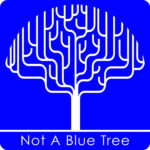NLP.
When therapy, whatever its form, is successful, it involves a change in the clients' models in some way which allows clients more choice in their behaviour.
Richard Bandler & John Grinder
Introduction to the Power of NLP.
The power of NLP is all about opening up choice and possibilities. NLP, Neuro-Linguistic Programming, is a collection of techniques, tools and models, modelled on excellence, which allow us to change our model of the world, opening up choices and giving us greater control of our lives. The techniques allow us to understand how we experience the world around us, how our minds, conscious and unconscious, process our experiences, and what we can do to enhance and manage those abilities. It is a way of thinking. It is a way of doing. It is a way of being.
The NLP Techniques, Tools, and Models.
Ambiguity and Specificity
Playing with language based on sounds, similarities and differences.
Anchoring
Learning to connect a sensory trigger to a positive emotional response.
Communication Model
Understanding how we experience the world so that we can communicate better and more effectively.
Dissociative Technique
An alternative way of viewing ourselves and how we interact with the world around us.
Goals and outcomes
Setting well-formed goals which create a compelling future and which motivate success.
Meta Model
Understanding language patterns which break through ambiguity to get the real issues.
Metaphors
Using stories to talk with the power of the unconscious mind.
Meta-Programmes
Understanding the processes we follow as we react to the world around us.
Milton Model
Using language patterns to open up possibility and choices in the unconscious mind.
Modalities and Sub-modalities
Understanding the language we use around our senses and how we experience the world.
Parts Integration
Addressing conflict in the unconscious mind to ensure that there is congruence.
Perceptual Positions
A technique using different perspectives to explore challenging relationships
Presuppositions of NLP
A set of reframes which allow us to take a different, positive perspective of the world around us.
Quantum Linguistics
Using language to create confusion which in turn opens up the mind to new options and possibilities.
Rapport
Understanding what we do to build rapport so that we can build rapport quickly and easily.
Reframing
Changing the frame of reference around a statement to give it another, more positive meaning.
Representational Systems
Learning how we process, store, and access information, allowing us to understand our own systems as well as work with the systems that others use.
Sensory Acuity
Looking beyond the words and learning how and what people communicate through a combination of words, tonality, and physiology.
Sleight of Mouth
More language patterns and playing with language to open up possibilities and options.
Strategies
Understanding the processes we follow, linked to our senses, to do what we do.
Time Line Therapy™
A technique to release limiting beliefs and negative emotions.
Understanding Language
Learning about the power of language and looking beyond the surface message for the power of the words.
Values
Understanding what is important to us and how this affects our model of the world.
Using and Learning NLP
As a client, you will be mostly unaware of which techniques are being used. All you are aware of are new ways of thinking, new ways of doing, new ways of being as you continue through the sessions. You recognise new possibilities, greater choice, and additional opportunities. One or two of the techniques require some explanation and some preparatory work, all of which is woven seamlessly and coherently into the work that we are doing. All done to effect change and to build on your success.
The only time you would need to know and understand the techniques would be if you decide to become a Practitioner of NLP. And, of course, this may become part of what you want to achieve.
